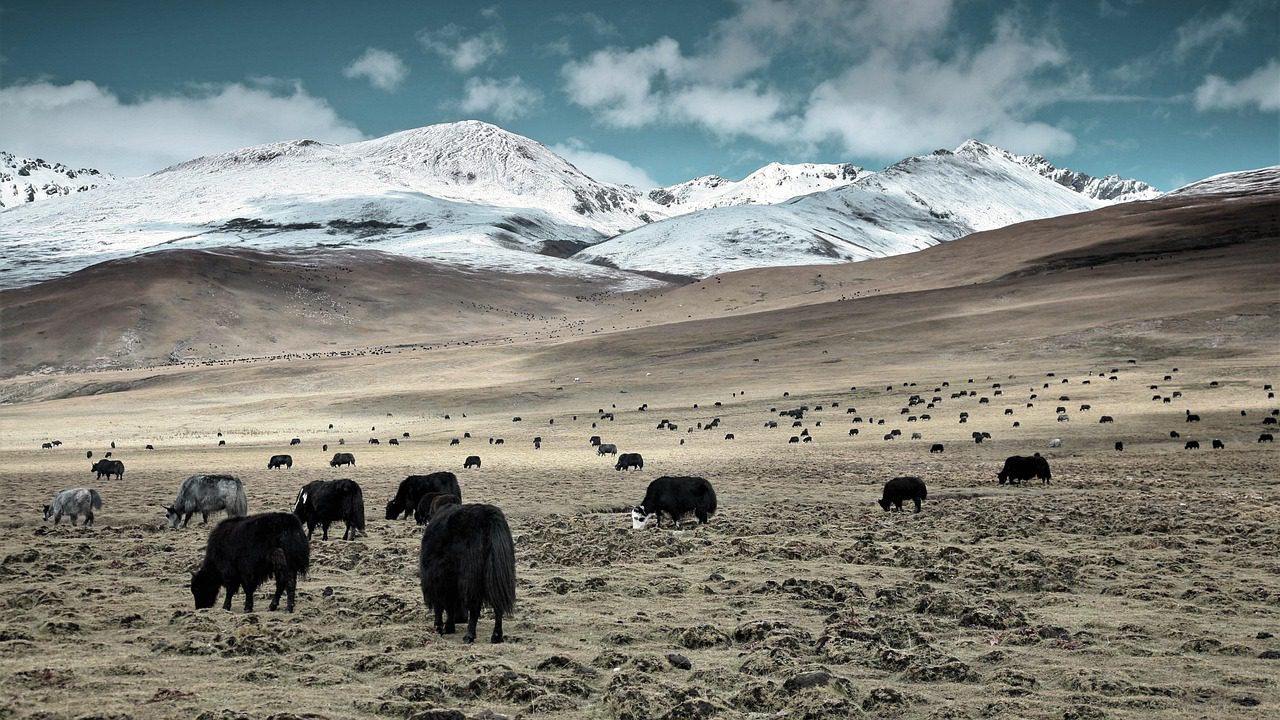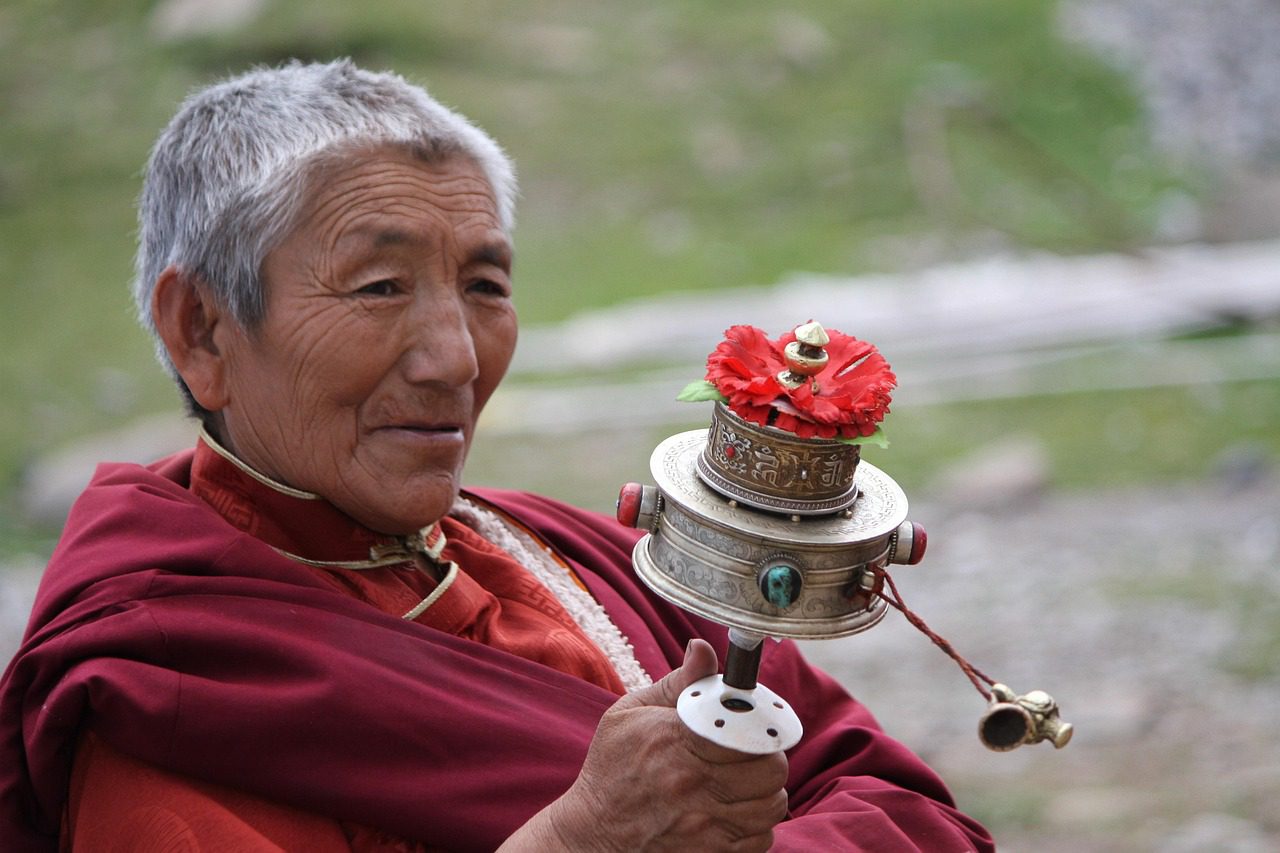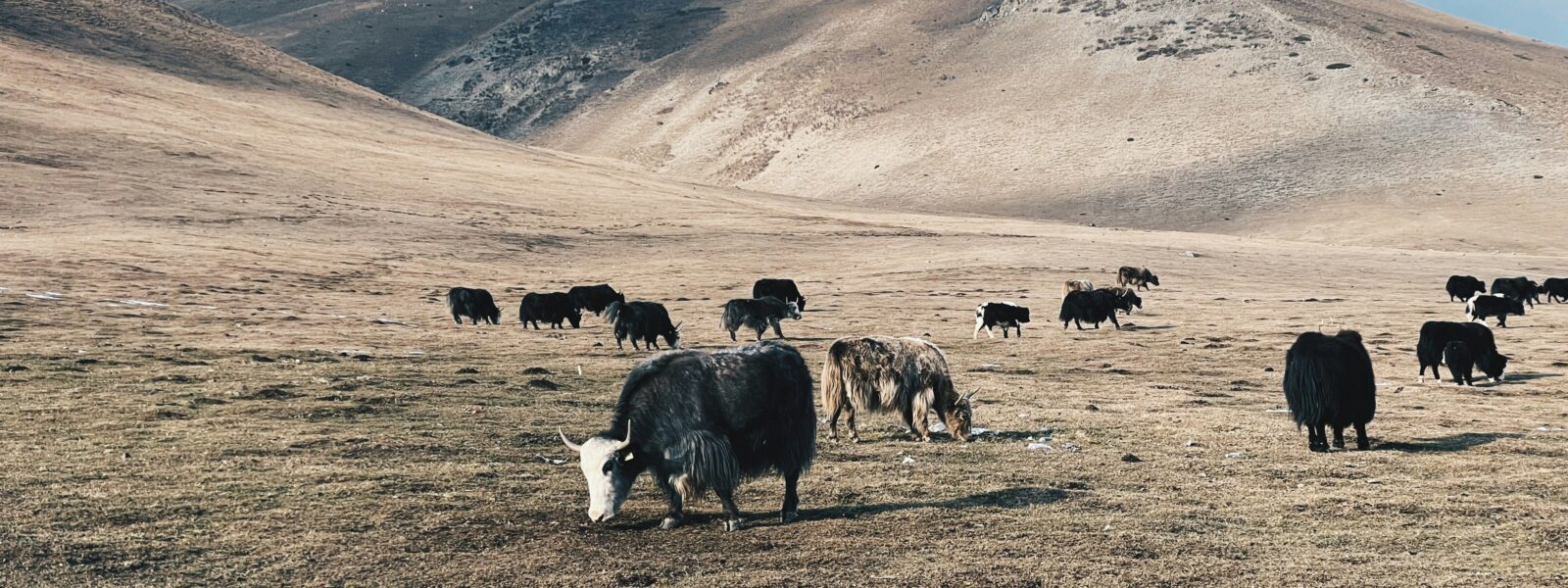The Code That Forgot the Mountain
By Declan P. O’Connor
Introduction — Between the Feed and the Field
What a Yak-Herder Knows That Our Phones Forget
Dawn in Changthang is a lesson in patient arithmetic. A herder checks the wind on his cheek, counts animals by memory, and reads the sky like a ledger older than script. The phone in his pocket, when there is reception, wants to teach a different arithmetic—likes, impressions, graphs that move as briskly as cold air across the plateau. But the yak insists on another cadence: step, chew, breath, step. This is where the phrase “algorithm and the yak Ladakh” acquires a plain, working meaning. The algorithm—ours—makes a map of attention and rewards speed. The yak—his—makes a living of attention and rewards steadiness. Watching the herd cross a patchwork of frost and tussock, one sees a style of thinking that treats slowness as data. Each hoofprint is a stored instruction; each pause is a calculated delay; each return to the same path is version control. Europeans arrive with itineraries stitched by airport lounges and glowing dashboards, but Ladakh answers with a test of patience: can you let the land update you at its own interval? When the mind relaxes, the feed contracts, and the field expands. The yak’s code is not written but grazed; it does not refresh—it repeats. In repetition, there is not boredom but memory; not waste but calibration. On this height, the algorithm must learn to make room for what breath, altitude, and hunger already know.
How a Plateau Becomes a Page and a Pilgrim Becomes a Reader
To understand Ladakh is to accept that landscape is not a picture but a text—less landscape-as-image than landscape-as-grammar. Rivers do not simply shimmer; they conjugate necessity. Villages do not sit on the margins; they annotate risk. The “algorithm and the yak Ladakh” motif helps us read this grammar because it keeps attention where it belongs: on how life is computed under constraint. Scarcity edits the sentence; weather rewrites the draft. A herder becomes a reader of texture and temperature, a steward of small certainties. The visitor, meanwhile, is tempted to outsource this reading to the device—download weather, cache maps, screenshot monastery hours. Yet the plateau changes the compact between knowledge and time. Here, a morning of waiting is not a glitch in plans; it is the plan. The yak waits because the sun will do what the sun does. The pilgrim waits because meaning matures at the speed of breath. To stand on a ridge above Tangtse and feel silence thicken is to meet a literacy we forgot we possessed: the ability to take instruction from slowness. Not the slowness of deprivation, but of depth. The phone can measure elevation and count steps; it cannot count how a horizon steadies you. To rank well in the search index of your days, you must learn an index older than keywords: footfall, cold, light, gratitude.
On this plateau, attention is not captured; it is cultivated. What you reward with patience, you inherit as meaning.

The Mountain Does Not Refresh
Flickering Signal, Steady Ridge: Rethinking Reliability
Somewhere between Leh and Hanle the bars on your screen begin to fall away like the last leaves before winter. What replaces them is not silence but a different form of reliability. The ridge holds. The river keeps its bargain with gravity. A village prayer bell moves air in the same key it did for a century. The algorithm in your pocket defines reliability as always-on availability; Ladakh defines it as always-there continuity. The difference alters how you relate to the day. In the city, the fault line runs through the network; here, it runs through the self. When the feed fails to refresh, we call it downtime; when the mountain “fails” to refresh, we call it morning. The result is a curriculum in which you learn to carry fewer assumptions about control. By the third day at altitude, sleeping and waking become negotiations with oxygen. The body prioritizes; the mind follows. The “algorithm and the yak Ladakh” rhythm suggests that reliability is designed into the ecology by restraint, not abundance. A monastery library preserves texts by asking them to endure cold and care; our servers preserve posts by asking them to endure scale and surveillance. The yak, unmoved by both, keeps teaching an older redundancy: carry what you can, and carry it slowly.
Faith Without Notifications: A Chapel of Delays

At a small gompa above a lateral moraine, a monk unrolls a thangka whose pigments still outpace the weather. The prayer drum turns once, then again, and you notice the liturgy’s fondness for repetition. Delay becomes devotion. The mountain does not refresh, yet the ritual does; every turn of the drum is a manual reload of attention. To Europeans raised in the continuous scroll, this can feel like an archaism. But Ladakh proposes that meaning keeps itself by rehearsing itself. The algorithm optimizes by predicting your next click; the ritual optimizes by remembering your last vow. In that reversal, the present becomes a conservatory for the past instead of a runway for the next. The “algorithm and the yak Ladakh” insight is that tools are not our enemies; tempos are. We can keep the phone if we keep the pauses that keep us. The monk looks at the same valley your camera frames, yet he sees a ledger of deeds and debts where you see relief and shadow. If faith is a structure of attention, then the chapel of delays is faith’s native architecture. Each pause is a stone; each repetition, mortar. You exit the gompa with nothing “new,” but with something sturdier: time lengthened by care.
The Algorithm of Slowness
Yak Logic: Iteration as Mercy
To walk behind a herd is to study a doctorate in sustainable iteration. The path is worn not because the animals lack imagination, but because the mountain does. Routes repeat to minimize risk. Grazing returns to what regenerates. The algorithm of slowness is not reactionary nostalgia; it is applied mercy. Mercy to the body that must endure thin air; mercy to the grass that must recover between mouths; mercy to the hour that must include both work and warmth. In this frame, “algorithm and the yak Ladakh” becomes a user manual for human limits. We speak of optimization as if the peak existed without the valley. Yet here, the valley teaches the peak how to be habitable. Iteration is not a rut; it is a reservoir. Each return is a vote for survival. Contrast this with the digital compulsion to novelty, where the first derivative of attention—its rate of change—becomes the tyrant. What would it mean to build tools that track recovery as carefully as they track growth? To design an itinerary where what you don’t do is the central feature? In the hush after a long ascent, the answer doesn’t arrive as a slogan but as warmth seeping back into fingers. We iterate to be kind to tomorrow’s self.
Endurance Engineering at 4,500 Meters
Engineers talk about graceful degradation—the capacity of a system to fail slowly, preserving core function under stress. Ladakh is a masterclass in this idea, an alpine case study in which communities spread risk across seasons, kinship, ritual, and topography. Houses face in ways that court winter sun. Water channels become braided arguments with melt and stone. Kitchens double as archives of calories and affection. Here, endurance is not brute force; it is clever slack. The “algorithm and the yak Ladakh” paradigm encourages us to imagine technology that builds slack as a feature, not a bug—devices that leave room for silence, routes that budget for wonder, schedules that enshrine contingency. The yak’s heart rate is a metronome for this wisdom: fast is sometimes necessary, but steady is almost always kinder. If European travelers come seeking the productivity hacks of altitude, Ladakh instead offers a humane algebra: reduce inputs of noise, increase outputs of presence. The mountain knows your metrics are temporary; its metrics—snowlines, fecundity of fields, the reuse of old paths—are generous because they are slow. At 4,500 meters, engineering grows tender. The test rig is your breath. The pass/fail criteria are warmth, companionship, and a horizon you can trust tomorrow.

The Civilization of Fragility
Strength That Refuses to Shout
The phrase sounds paradoxical until you share butter tea with a family that measures prosperity in the number of winters they can greet without debt. Fragility, here, is not weakness; it is precision. It is knowing which stone in a wall must not be moved, which story in a household must be told again, which field cannot afford a careless boot. Civilizations that mistake scale for strength forget this; they expand until attention collapses. In contrast, Ladakh’s scale is intimate; its strength is calibrated to its margins. The “algorithm and the yak Ladakh” theme reveals fragility as a civic technology. Festivals distribute joy across dark months. Monastic calendars pace communal energy. Even the etiquette of tea is a protocol for warmth. Europe’s cities once possessed similar micro-infrastructures of care; some still do in stubborn neighborhoods that refuse to surrender their baker and bell tower. The point is not to enshrine fragility as a fetish, but to borrow its intelligence. Systems that assume abundance are brittle; systems that rehearse scarcity are supple. Ladakh rehearses scarcity with grace. If you want to teach a machine humility, start by teaching it winter.
Ritual as Data Preservation
Archives survive when the culture around them understands why a page deserves tomorrow. Ladakh’s rituals perform this function without fuss. A village festival is the backup of a moral code; a harvest dance is an executable file of gratitude. In a world where data is cheap and meaning is expensive, ritual conserves value by making memory physical. The “algorithm and the yak Ladakh” motif suggests that our modern problem is not storing bits but storing attention. Rituals solve for attentiveness by inviting the whole body into the act: taste, rhythm, breath, repetition. Imagine an interface that refused to work unless you were fully present—no multitasking, no background tabs of anxiety. That is a festival at altitude. It does not scale; it roots. And because it roots, it resists erasure. When storms sever roads, rituals keep a village synchronized with itself. When prosperity tempts amnesia, rituals repair the timeline. The European traveler who thinks of culture as a museum exhibit finds instead a running service with perfect uptime. The server room is the kitchen. The firewall is kinship. The checksum is a song you can’t forget.

The Monsoon That Never Comes
Scarcity as Teacher, Not Threat
Ladakh sits in the rain shadow, a geography that trains expectation to be modest and gratitude to be muscular. The monsoon does not arrive as it does elsewhere; water becomes a covenant written in glacial script. To those who visit, the absence reads like loss. Stay longer and it begins to read like instruction. Scarcity disciplines the desires of a place without extinguishing its joy. The “algorithm and the yak Ladakh” angle clarifies the contrast with our digital commons, where abundance breeds noise and noise breeds exhaustion. When every stream is infinite, the listener starves. Here, the stream is literal and finite; you learn to listen. Scarcity is not an ideology; it is an apprenticeship in thresholds. You begin to cherish what arrives, to repair what breaks, to savor what endures. Even the language adapts—words for snow, ice, melt, wind, each an index of necessary nuance. European readers may recall droughts unspooling across Mediterranean summers; Ladakh is a preview and a counsel. Live with less water. Live with more ceremony. Let the absence of the monsoon remind you that the imagination of enough is a form of civilization.
Waiting as a Civic Virtue
In villages along the Indus, irrigation is a choreography of patience. Water turns to one field before another and not because of algorithmic favoritism but because of an ethic: we take turns. Waiting is not passivity; it is participation. The “algorithm and the yak Ladakh” phrase does work here because it juxtaposes two systems of allocation—one abstract and fast, one embodied and slow. The latter produces fewer headlines and more neighbors. Waiting redistributes grace. The line at the spring gathers news, seals friendships, and decides the evening menu. If this sounds romantic, it is only because modern scarcity often arrives stripped of community. Waiting inside a well-kept ritual produces belonging; waiting inside a failing infrastructure produces fury. Ladakh’s lesson is to ritualize waiting, to make it a place where citizenship happens. For European cities facing water stress, heat, and migration, this is a portable wisdom: make the queue a commons; make the delay a practice of regard. When it is your turn to open the gate, you discover the relief of proportion. The flow is small; the feeling of enough is not.

The Return of the Pilgrim
Carrying a Slower Clock Home
Every journey exports a few objects and, if you are fortunate, imports a new metronome. You leave Ladakh with wool, salt, maybe a chipped bowl you swear pours warmer tea. What you bring back is a slower clock. The “algorithm and the yak Ladakh” cadence has reset something in you—an inner refresh rate, a tolerance for unscheduled hours, an appetite for rituals that commit you to neighbors rather than novelty. The test will come on a Tuesday evening when the inbox mounts a small rebellion and the city demands performance. Here is where the yak’s algebra helps: do the next near thing, then the next, and refuse to spend tomorrow’s strength paying for today’s ambition. You learn to schedule absence into presence: a walk without music, a window without news, a dinner that takes all night and produces nothing but the feeling that life is allowed again. Europe’s plazas, when used properly, are built for this; Ladakh simply reminded you how to stand still in them. Slowness becomes not an aesthetic but a skill you can practice without applause.
From Algorithm to Allegiance
The final conversion is subtle. You begin by suspecting that your tools are too fast; you end by recognizing that your loyalties have been misfiled. The “algorithm and the yak Ladakh” pairing worked because it asked a straightforward moral question: to whom, and to what, do you owe your attention? The answer is not the mountain alone; it is the people who live by it and the homes that shelter them. Allegiance becomes local again. You give your attention to what can look back. The phone still has its uses; it helps you book trains and remind friends and translate menus in the Alps. But it no longer dictates the day’s shape. You keep a few rituals from the plateau—light a candle before work, share bread before argument, walk in cold air before screens. The algorithm is welcomed as a servant, dismissed as a master. When you look at a yak again, even in memory, you no longer see quaintness. You see a steeple of patience on four legs. The pilgrimage ended when your flight landed; the allegiance began when you learned to guard your attention as a civic asset.

FAQ
Is Ladakh suitable for travelers seeking “digital detox,” or is that phrase a cliché?
Ladakh is suitable precisely because the landscape enforces a different cadence rather than offering a curated escape. Digital detox becomes less a performance than a byproduct of living at altitude, where signal flickers and weather insists on patience. The goal is not withdrawal from technology but reordering allegiance. The place is not a spa; it is a school of attention that teaches you to use tools at human speed.
How can European travelers respect local rhythms without romanticizing hardship?
Respect begins by treating scarcity as expertise, not spectacle. Ask what waiting means here, why rituals exist, and how routes repeat for reasons you might not see. Pay fair prices, accept delays as part of the culture’s wisdom, and resist the urge to “optimize” what is already delicately balanced. Notice how fragility preserves dignity and builds a quieter strength than scale ever could.
What does “algorithm and the yak Ladakh” practically mean for planning a trip?
It means designing slack into your itinerary, favoring fewer places with deeper attention, and allowing for unhurried mornings. It also means preparing to learn from herders, monks, and cooks whose routines embody iteration, patience, and repair. Choose routes that keep you present rather than merely moving; choose lodgings that honor local water and waste practices; choose silence as a daily practice, not a souvenir.
Is travel to Ladakh compatible with sustainability goals in a warming world?
Compatibility depends on pace, respect, and contribution. Travel slowly, stay longer, and distribute your spending among households, not just hotels. Prefer overland segments where feasible, offset thoughtfully, and favor experiences that transmit knowledge rather than extract novelty. Sustainability in Ladakh is not an abstract virtue; it is the daily arithmetic of water, warmth, and work. Align your presence with that arithmetic.
How can lessons from Ladakh translate to everyday European city life?
Translate the tempo, not the topography. Build rituals that preserve attention—shared meals, device-free walks, seasonal markers that tie the household to local weather. Advocate for public spaces where waiting is communal rather than punitive. Treat time as a commons. When scarcity arrives—of water, heat relief, or quiet—organize care before outrage. The plateau’s wisdom scales down to apartment blocks and neighborhood squares.
Conclusion
Takeaways for a Life That Can Breathe
The mountain did not refresh; it renewed. The yak did not preach; it performed. Between them, a traveler relearns that endurance is intelligent, fragility is civic, and scarcity can be generous. The “algorithm and the yak Ladakh” pattern offers a practical ethic: design days that can fail gracefully, rituals that store attention, and journeys that move at the speed of regard. Return home with a slower clock, an appetite for neighbors, and a budget for wonder. In a century that confuses speed for significance, Ladakh does not scold; it tutors. Listen long enough and you may notice that your tools behave better when your loyalties are clear. Keep the phone. Keep the pauses that keep you human. And when the horizon asks for your patience, give it gladly: you will inherit distance you can trust.
About the Author
Declan P. O’Connor is the narrative voice behind Life on the Planet Ladakh, a storytelling collective exploring the silence, culture, and resilience of Himalayan life.

